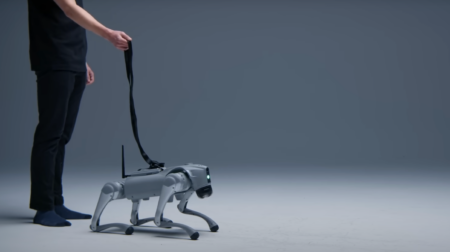The AI market is entering a new phase as the recent “gold rush” starts to show signs of slowing, according to new analysis from global intellectual property firm Marks & Clerk.
While the number of AI filings per year at the European Pattern Office (EPO) continues to rise, the pace of growth has slowed, with a 24% rate of growth in 2019 (from 6,165 in 2018 to 7,624 filings), compared to 45% in 2017. Marks & Clerk said this suggests that the AI industry is beginning to mature.
However, the company added the continued growth along with a wave of developments means that the market is far from an “AI winter”, due to new countries are emerging as frontrunners when it comes to patent applications, with the Republic of Korea coming out top per capita.
This analysis has also shown that patents have become an increasingly key part in defending business strategy, with the number of EPO oppositions filed against patents relating to AI technologies increasing in 2020 (25) and then again in 2021 (27).
Furthermore, there has been a decrease in the opposition rate reported by all other technology areas, suggesting that AI patents in particular are increasingly becoming integral to businesses’ commercial strategies.
Mike Williams, partner, at Marks & Clerk, said: “Over the last ten years, AI has become a household term, and we have seen it shift from an emerging technology to mainstream adoption. With that in mind, it’s not surprising that we have seen a slow-down – of what was rapid growth – in the volume of patent filings. However, that doesn’t necessarily correlate to a slump in innovation or a fall in investment, more a sign that the industry is meeting a point of maturity.”
“The fact that oppositions filed against AI technologies is rising is a key proof-point in the importance of getting patent applications in at the point of creation, and then using them to defend your businesses competitive advantage. All too often businesses overlook the importance of getting protections in place when starting out, however ensuring you have the rights to your IP not only adds commercial value to your business, but it also safeguards you from imitation.”
On a country-by-country basis, Chinese applicants at the EPO overtook Japanese applicants in 2020, making it the third largest filer of AI applications, behind the United States and Europe. However, between 2015 and 2020, per capita, applicants from the Republic of Korea have overtaken that of Japan, the United States and Europe to become the largest filers on a per capita basis.
When looking at individual sectors, the “manufacturing and industry” sector has risen by three places into the top 10 sectors by number of patent filings, which is indicative of AI being applied more in the physical economy.
At a technology level, computer vision technology has seen an accelerated increase in patent applications in the last five years, up from 1,590 to 1,939 publications in 2021.
However, speech processing applications have been in decline, falling from 45% of all publications in 2000 to only 7% of publications in 2021. Marks & Clerks added it appears that after a period of heavy investment, speech processing as a technology has reached a maturity commensurate with the current market opportunities, while the heavy increase in computer vision likely indicates a still significant runway of potential applications.
Williams added: “As the market matures, we expect to see more nuanced, complex technology coming through applications, and the EPO needs to understand these nuances to ensure the correct protections are granted.”








